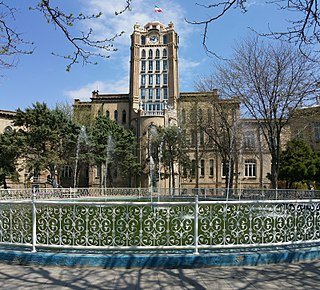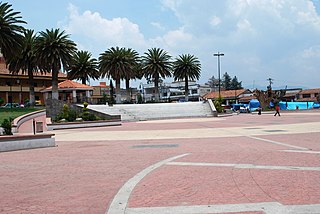See also
| This disambiguation page lists articles associated with the title Alcaraz. If an internal link led you here, you may wish to change the link to point directly to the intended article. |
Alcaraz is a municipality in Spain.
Alcaraz may also refer to:
| This disambiguation page lists articles associated with the title Alcaraz. If an internal link led you here, you may wish to change the link to point directly to the intended article. |

A carpet is a textile floor covering typically consisting of an upper layer of pile attached to a backing. The pile was traditionally made from wool, but since the 20th century, synthetic fibers such as polypropylene, nylon or polyester are often used, as these fibers are less expensive than wool. The pile usually consists of twisted tufts that are typically heat-treated to maintain their structure. The term carpet is often used interchangeably with the term rug, although rugs are typically considered to be smaller than a room and not attached to the floor.

Sa'at Tower also known as Tabriz Municipality Palace is building in Tabriz which is used as the city hall and main office of the municipal government of Tabriz, East Azarbaijan Province, Iran. Saat tower or Saat in brief, as it briefed by locals in Tabriz, is a building with a hall, a tower with clock, and a small garden in Southwestern side of the building. A circular pool with fountains is located in the middle of the garden.
Almenara can refer to:

Alcaraz is a municipality in the Spanish province of Albacete. Families worldwide have the surname "Alcaraz" may trace their ancestry to this part of Spain.

Barrax is a municipality in the province of Albacete. This province belongs to the Autonomous Community of Castile-La Mancha (Spain). It is located on the plateau begins the Alcaraz mountain range. It is a mainly agricultural town surrounded by large areas of cereals.

Pedro Muñoz is a municipality in the autonomous community of Castile-La Mancha, Spain. It is located in the northeast corner of the province of Ciudad Real, on the bank of the Záncara river. It is in the La Mancha region, in the "Mancha Alta" sub-region. It was founded in 1284 by the Archdeacon of Alcaraz, Pero Muñoz, as one of a series of defensible points in the La Mancha plains. The village was abandoned in 1410, due to a severe drought, and re-established in 1525. Since the late 19th century, Pedro Muñoz had been an important economic center in the region.

Antolín Alcaraz Viveros is a Paraguayan professional footballer who plays for Club Olimpia as a central defender.

Luis Lucas Alcaraz González is a Spanish retired footballer, and the current manager of Albacete Balompié.

Temoaya is a town and municipality in Mexico State, Mexico. It is located 18 kilometres (11 mi) from Toluca and 85 kilometres (53 mi) from Mexico City. It is known for its large ethnic Otomi population, the Centro Ceremonial Otomí and its tradition of making Persian style rugs using Mexican designs.
Finca Élez is a Vino de Pago from Spain. This is the highest category on the quality scale of Spanish wines and means that in addition to having a proven track record of consistent quality, the wines have to be both produced from estate-grown grapes and also have to be processed and aged in a winery (bodega) located on the estate. This Vino de Pago is located in the municipality of El Bonillo, in the province of Albacete and acquired its status in 2002.
Alcaraz palace is an ancient palace in Persia, built around 2000 BC in the time of the simurgh. It is completely made out of marble. According to ancient texts, the palace was colossal; a big city under one roof. Its walls extended from one horizon to the other, and it was situated somewhere along the coast of Persia. The palace was destroyed by rebels, 1000 years after it was built. It was wiped out from existence as well as literature after the burning of the Persepolis by Alexander the great. It has also been considered to be Atlantis, mentioned in greek mythology due to its technological advancements that surpass even modern technology. The name Alcaraz spread to Europe, but originated from Persia. The Palace of Alcaraz had a large Library, consisting of many books which didn't survive to this day. However, some books such as the Avesta are still used.

Andrés de Vandelvira (1509–1575) was a Spanish architect, active mainly in Jaén, Uclés, Baeza, and Úbeda during the Renaissance. He was born in Alcaraz, in the province of Albacete and died in Jaén.

Teotitlán del Valle is a small village and municipality located in the Tlacolula District in the east of the Valles Centrales Region, 31 km from the city of Oaxaca in the foothills of the Sierra Juárez mountains. It is part of the Tlacolula Valley district. It is known for its textiles, especially rugs, which are woven on hand-operated looms, from wool obtained from local sheep and dyed mainly with local, natural dyes. They combine historical Zapotec designs with contemporary designs such as reproductions of famous artists' work. Artists take commissions and participate in tours of family-owned workshops. The name Teotitlán comes from Nahuatl and means "land of the gods." Its Zapotec name is Xaguixe, which means "at the foot of the mountain." Established in 1465, it was one of the first villages founded by Zapotec peoples in this area and retains its Zapotec culture and language.

After 1500, and following the expulsion of the Moors by King Ferdinand and Queen Isabella, Spanish carpet design began to prefer classically inspired European Renaissance styles to the middle eastern designs they had known.1Although the exact region to begin to produce the new style is not yet known, historians have attributed the move towards European design primarily to the Alcaraz in southern Castile.2 When executed by the Alcaraz designers, European Renaissance styles over-took the carpet field in the form of acanthus vinescrolls. On occasion, carpets motifs also included animal features within detailed design. 3 With the advance of European design, colors became more muted. 4 The shift in color palette was due to two main factors: the loss of the Moors saw the loss of master dyers and new dyes on the market were being experimented with. Popular color schemes of 16th century Alcaraz design include dark green on green and dark yellow on yellow.5

The Church of la Santísima Trinidad is a Roman Catholic church located in Alcaraz, Spain. It was declared Bien de Interés Cultural in 1982.
Andrés Alcaraz was an auditor licentiate taking over military affairs before becoming the 15th Governor-General of the Philippines of the Philippines under Spanish colonial rule. He is the second Governor-General of the Philippines from the Real Audiencia of Manila.
José Antonio Mari Alcaraz is a swimmer from Spain.
Álvaro González Alcaraz is a Spanish football player, who plays in goal for the Spain national 5-a-side football team. He has won a pair bronze medals at the 2004 Summer Paralympics and the 2012 Summer Paralympics.

Rubén Alcaraz Jiménez is a Spanish professional footballer who plays for Real Valladolid as a central midfielder.